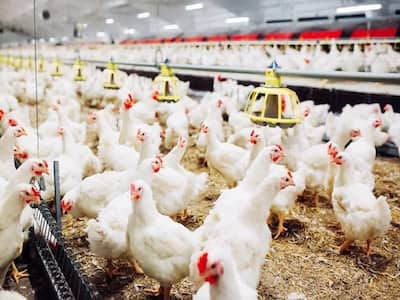
The recent surge in avian influenza outbreaks among mammals raises concern that the H5N1 avian influenza viruses might adapt to infect humans more easily.
Although the ongoing outbreaks of avian influenza, also called bird flu, largely affect animals, the virus may pose risks to humans as well, stated a joint release from FAO, WHO and WOAH. Given the increasing number of H5N1 avian influenza detections among mammals, the tripartite partners have raised concern about the potential risk to human health.
FAO is Food and Agriculture Organization of the United Nations; WHO is World Health Organization; WOAH is World Organisation for Animal Health.
The organizations have urged countries to work together to save as many animals as possible and to protect people.
Avian Influenza outbreaks among mammals increasing
Typically, avian influenza viruses spread among birds, but there have been increasing reports of deadly outbreaks among mammals, caused by H5N1 avian influenza viruses, including influenza A(H5N1).
Because mammals are biologically closer to humans, experts at FAO, WHO and WOAH fear that the virus might adapt to infect humans more easily. They have also expressed the possibility of the emergence of new influenza viruses that may be more harmful to animals and humans.
Last year, outbreaks of H5N1 high pathogenicity avian influenza in poultry and wild birds were reported in 67 countries in five continents, as recorded by WOAH. The outbreaks led to death or culling of more than 131 million domestic poultry in affected farms and villages.
This year, 14 more countries have reported similar outbreaks, mainly in the Americas. Deaths of large number of wild birds have been linked to influenza A(H5N1) clade 2.3.4.4b viruses.
READ RELATED: 8 Protein Powders To Stay Away From Right Now
What is concerning is the recent surge in outbreaks among mammals. Since 2022, the World Organisation for Animal Health (WOAH) has received reports of outbreaks in mammals from 10 countries across three continents. However, it is suspected that more countries may be facing the outbreaks but not detected or reported.
Both land and sea mammals have been affected, including cats and dogs, farmed mink, seals, and sea lions.
Influenza A(H5N1) infections inhumans
Infections in humans remain very rare, with just eight cases reported since December 2021, as reported by FAO, WHO and WOAH. However, the virus can cause severe disease with a high mortality rate in human population. Most human cases detected till now are linked to close contact with infected birds and contaminated environments.
WHO is working closely with FAO and WOAH to monitor the evolution of these viruses, and the organization encourages all countries to strengthen their efforts to curb the spread of avian influenza and to detect any human cases.
Total Wellness is now just a click away.
Follow us on
Don’t Miss Out on the Latest Updates.
Subscribe to Our Newsletter Today!
window.addEventListener(‘load’, (event) => {
$(‘#commentbtn’).on(“click”,function(){
(function(d, s, id) { var js, fjs = d.getElementsByTagName(s)[0]; if (d.getElementById(id)) return; js = d.createElement(s); js.id = id; js.src = “//connect.facebook.net/en_US/sdk.js#xfbml=1&version=v2.3”; fjs.parentNode.insertBefore(js, fjs);}(document, ‘script’, ‘facebook-jssdk’));
$(“.cmntbox”).toggle();
});
});








